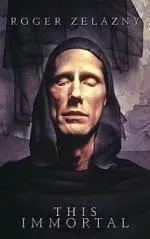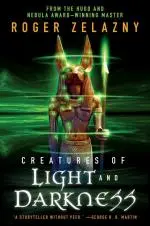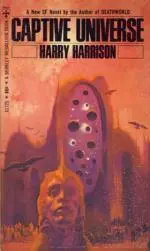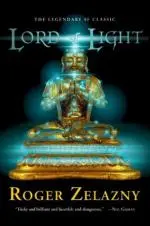This week, Marvel's latest movie, Thor: The Dark World, releases in theaters in the U.S. That got me thinking about the character and his rather unusual status in the early Marvel Universe. At the time Stan Lee and Jack Kirby were on a tear of creating heroes based largely around science. From Spider-Man to Ant-Man to Captain America and the Hulk, most of these characters relied on some scientific basis (no matter how far-fetched or impossible) to explain their origins. And then there was Thor, the actual God of Thunder, fighting alongside the Avengers.
Of course, since this was Jack Kirby, there was a bit of zany science that made its way into Thor. The energies the gods wielded, the nature of Asgard...hell, there was even a robot called The Destroyer. Thor fits so well into the Marvel cinematic universe because he is basically an alien, and Asgardian "magic" can easily be seen as advanced technology. In the tradition of other Kirby creations like the New Gods at DC and the Eternals at Marvel, the lines between mythology and science fiction blur. In honor of that, here are ten science fiction works that also do the same.
![]() 10. The Keltiad
10. The Keltiad
Jim Morrison’s one-time lover, Patricia Kennealy-Morrison, penned a series of books inspired by Celtic Mythology. Kennealy-Morrison posits a universe where Celts took to the stars ahead of the other people of Earth, establishing the interstellar kingdom of Keltia. The series draws on Celtic and pagan cultural ideas, pairing them with advanced technologies that exist alongside magic. Later books in the series went on to draw on Arthurian myth and legend. Eight books have been released to date and rumor is that Kennealy-Morrison is working on another.
![]() 9. Stargate
9. Stargate
Say what you will about Devlin and Emmerich’s movie, but it inspired a whole universe of spin-offs including the television series Stargate SG-1, Stargate Atlantis and Stargate Universe, as well as numerous books, comics and video games. The concept behind Stargate isn’t new, of course, the idea being that using the titular stargates, aliens visited Earth in the past, masquerading as gods through their use of advanced technology. In the movie, the recovery of a stargate allows a team of soldiers to travel back through the gate and discover the race responsible for the Egyptian myths. Later, the series established elements from Norse myths and Arthurian legend as well.
![]() 8. The Nikopol Trilogy
8. The Nikopol Trilogy
This graphic novel by Enki Bilal is set in Paris in the year 2023. Alcide Nikopol returns to Earth after a 30 year sentence spent orbiting the planet in suspended animation. He returns to a fascist France after a couple of nuclear wars. Above Paris floats a pyramid within which dwell the Egyptian gods—all except Horus who is on the run from his fellows. He finds and possesses Alcide, and they set about trying to fight against the oppressive power structure in Paris. Bilal’s story might be a bit jarring for fans of western comics, but if you’re a fan of Moebius or Jodorowsky, it’s right up your alley.
![]() 7. Norse Code
7. Norse Code
This urban fantasy from Greg Van Eekhout, like Thor, takes Norse mythology into the 21st century. Raganarok, the final battle, the Norse apocalypse, is approaching and Odin needs an army. Anyone with a trace of Odin’s blood is eligible and so DNA testing sits firmly in the science fictional center of this urban fantasy. Mist, a Valkyrie tasked with recruiting these soldiers, is just one of the characters. Hermod, a god who is not mentioned in the prophecy of Ragnarok, also figures. An interesting examination of what gods might do with a prophecy for the end of the world.
![]() 6. This Immortal
6. This Immortal
Roger Zelazny's fascination with mythology earned him not one but three spots on this list. The first is This Immortal, inspired, in part, by Greek Mythology. Set in the future, on Earth after a nuclear war, it centers on Conrad Nomikos, a man who has seemed to live for a long time. Many of Earth's original inhabitants have left and the planet is now owned by the alien Vegans. When a particularly prominent Vegan is attacked, Conrad must help protect him despite his feelings about the Vegan's ownership. While it can be interpreted otherwise, there are strong hints that Conrad is really the god Pan. As a result of nuclear war, there are mutants in the land, but they, too, seem to resemble creatures out of myth. As you will see, this blending of scientific and mythological explanations, the blurring of lines, is typical of Zelazny's fiction. Of note this novel (under its original title, ...And Call me Conrad) tied for the Hugo in 1966 with Frank Herbert's Dune.
![]() 5. Creatures of Light and Darkness
5. Creatures of Light and Darkness
As mentioned, here's Zelazny again, only Creatures of Light and Darkness draws on Egyptian rather than Greek myths. It’s set in a future where humanity stretches through space and people have the power to take on the personas of the Egyptian deities. In the telling of the story, the line between myth and science fiction is blurred, though technology is evident, including tropes similar to those in Cyberpunk. One of Zelazny’s more experimental works (the last chapter is written as a play), it was only published on the urging of Samuel Delany.
![]() 4. Captive Universe
4. Captive Universe
Harry Harrison’s book, published in 1969, tells the story of Chimel, a young Aztec tribesman living in an isolated valley. Chimal’s world is affected quite directly by the Aztec gods, but where others are complacent, Chimal is curious, inquisitive. This trait leads him to discover that the valley is really part of a generation ship moving through space. Chimal’s people and the others on it are part of a complex design hatched on Earth centuries before. One of the relatively rare examples of tackling Meso-American mythology.
![]() 3. Queen of Air and Darkness
3. Queen of Air and Darkness
Poul Anderson’s story is technically a novella but fits very firmly in this category. Set on a colony world called Roland (again in the future), it involves the disappearance of a baby. P.I. Eric Sherrinford is called in to help find the baby and instead discovers the remarkable appearance of creatures out of the Celtic myths of Faerie. But are they merely what they appear to be?
![]() 2. Ilium/Olympos
2. Ilium/Olympos
Dan Simmons frequently draws on literature and mythology in his works, and in Ilium he draws on Greek legend and mythology, recreating the Iliad in a science fictional context, with people taking on the roles of Greek Gods and the war itself taking place on Mars (at the foot of Olympus Mons, in a nice touch). Three interweaving storylines (and timelines) interact in the telling of this story which is replete with elements like AIs and time travel. Olympos is the sequel.
![]() 1. Lord of Light
1. Lord of Light
Roger Zelazny’s third appearance on this list is also one of my favorite works. Lord of Light focuses on the mythology of Hinduism and Buddhism, blending those elements with science fiction tropes. Like Creatures of Light and Darkness, the line between science fiction and fantasy is blurred. I wrote about Lord of Light before, but I never tire of talking about it. Essentially, Sam (AKA: Buddha, the Lord of Light, Mahasamatman, decides to turn his back on Heaven and support the common man. This, understandably, makes him the target of the other so-called gods trying to protect their power. Due to the especially circular nature of Hindu mythology, the science fictional and mythological elements merge very well. It also contains one incredible groaner of a pun. Highly recommended.
That's my list. As usual, if you have any comments or recommendations for other such books, let me know in the comments below.

About the author
Rajan Khanna is a fiction writer, blogger, reviewer and narrator. His first novel, Falling Sky, a post-apocalyptic adventure with airships, is due to be released in October 2014. His short fiction has appeared in Lightspeed Magazine, Beneath Ceaseless Skies, and several anthologies. His articles and reviews have appeared at Tor.com and LitReactor.com and his podcast narrations can be heard at Podcastle, Escape Pod, PseudoPod, Beneath Ceaseless Skies and Lightspeed Magazine. Rajan lives in New York where he's a member of the Altered Fluid writing group. His personal website is www.rajankhanna.com and he tweets, @rajanyk.

















